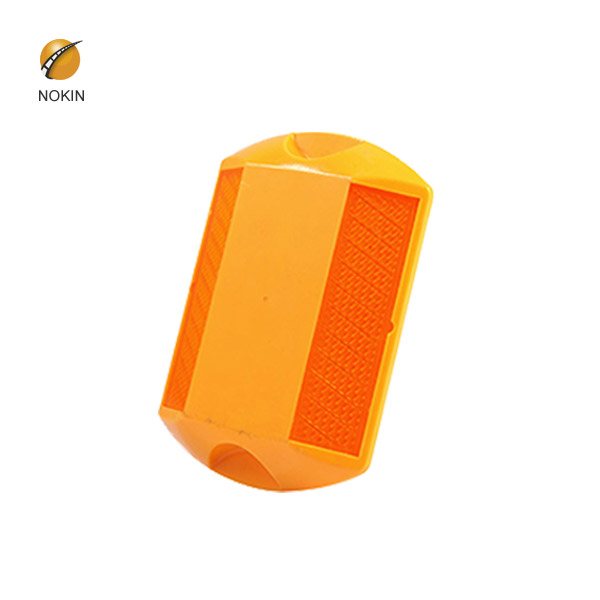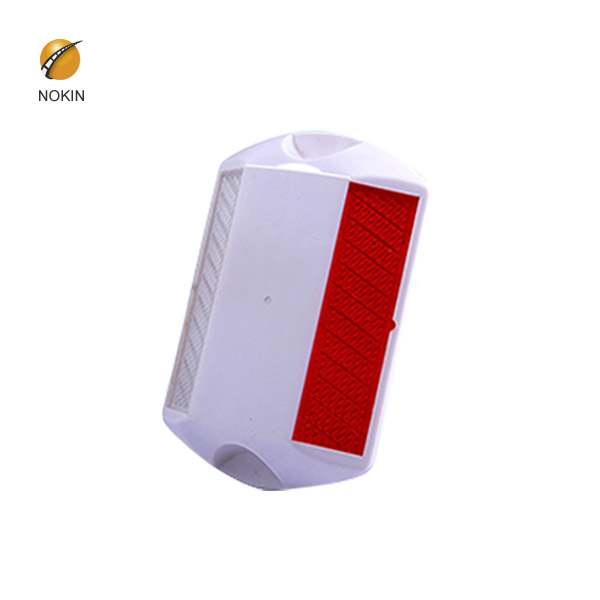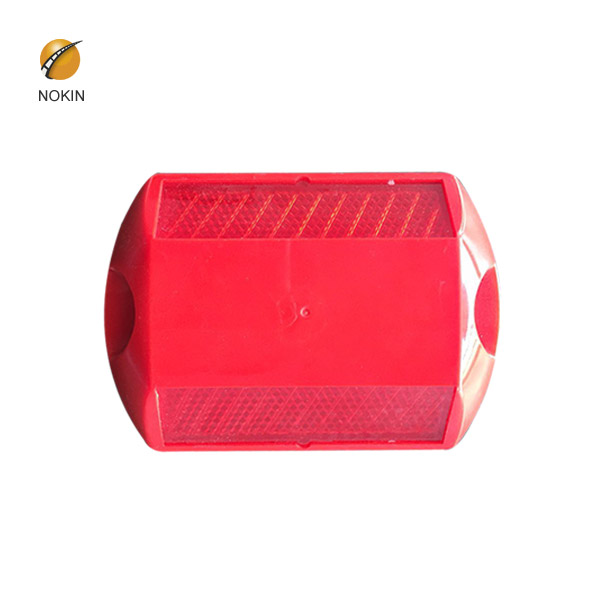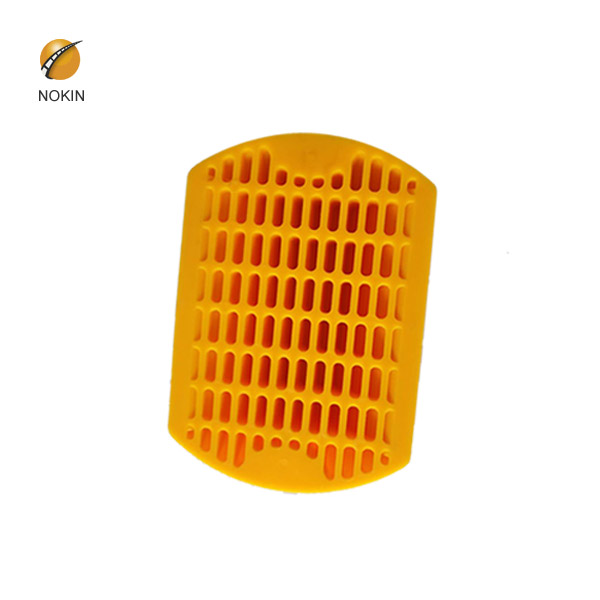



Reflective studs on motorway are safety devices used on roads. These devices are usually made of plastics, ceramics, thermoplastic coatings or occasionally metal, and come in a variety of shapes and colors. Reflective studs on motorway include lenses or reflective sheets, which enhance visibility by reflecting automobile headlights. Some other names for specific types of reflective studs include convex vibration lines, Botts' dots, contour lines, cat's eyes, road studs or road turtles. Sometimes they are simply referred to as "reflectors".
The specifications of Reflective studs on motorway:
| Body material | ABS |
| Size | 116*82*18mm |
| Lens Material | PMMA |
| Reflector type: | Double side/Single side |
| Color | Red, Yellow, Green, Blue, White |
| Packing | 50pcs/carton |
| Carton size | 38*36*23cm |
| Load capacity | 15Tons |

Retro reflective studs have long been the favoured and trusted choice for roadside delineation, but now SolarLite Active Road Studs are an excellent alternative. A Shaw solution to delineation With a history and reputation spanning more than 80 years, ‘cats eyes’ have become a familiar feature on UK roads as the go-to choice for roadside
Highways England is installing around 170 of the innovative LED road studs at one of England’s busiest motorway junctions – used by over 90,000 vehicles every day.
Motorway Slip Road Markings. Motorway slip road markings come in the form of white lines with separation gaps dividing the slip road from the main carriageway. There are also green reflective studs, otherwise known as cats eyes on the right-hand edge.
6.12 The spacing of road studs used with double white lines is dealt with in para #5.115.11. The spacing of studs used with centre lines and lane lines is described in tables 4-1 , 4-2 and 4-3 , and studs used in conjunction with continuous edge lines or with diagram 1010 in table 4-5 and para 10.11 .
Roads studs have been in use for more than 75 years. Since their introduction they have provided drivers on UK roads with effective lane delineation, particularly during the hours of darkness and in adverse weather conditions. 3M manufactures a surface mounted road stud, 3M Marker Series 290, which meets the requirements of BS EN 1463 parts 1 and 2.
Reflective road studs may be used with white lines. White studs mark the lanes or the middle of the road. Red studs mark the left edge of the road. Amber studs mark the central reservation of a dual carriageway or motorway.
Reflective road studs may be used with white lines. White studs mark the lanes or the middle of the road. Red studs mark the left edge of the road. Amber studs mark the central reservation of a dual carriageway or motorway. Green studs mark the edge of the main carriageway at lay-bys and slip roads.
Feb 26, 2010 · Hi I don’t know a simple way of remembering it but the green studs are marked on the edge of the main carriageway at slip roads, amber studs mark the central reservation, red studs mark the left edge and white studs marks the middle of the road.
5 Reasons Bikers Should Know About Reflective Studs. Reflective studs are increasingly being used on high-speed motorways and busy carriageways especially in poorly lit areas to allow easy visibility of the various lane demarcations. Also known as cat’s eyes, these road studs were recently introduced in almost all standard roads around the world.
Roads.org.uk is the home of roads in the UK – from road project updates to maps of every motorway and expressway and detailed articles exploring the history of the network. It’s the essential guide to the highways of Great Britain and Northern Ireland.
Motorway or dual carriageway reflective studs (or cat’s eyes as they are also referred to) are designed to be most effective in poor light conditions by reflecting light back to the driver to signify which part of the motorway they are driving on, or where they might need to exit.
Amber studs indicate a line which should not be crossed on the right-hand edge of a carriageway; ie. the central reservation of a dual carriageway road or the right edge of a one-way road. Amber studs are often bi-directional, with red reflectors on the reverse side which are used when traffic is running in a contra-flow situation as part of
Highways England is installing around 170 of the innovative LED road studs at one of England’s busiest motorway junctions – used by over 90,000 vehicles every day. The intelligent road studs are being introduced as part of a £3 million project to improve journeys and safety at Switch Island in Merseyside, where the M57, M58 Continue reading “Press release: Intelligent road studs to
The UK identified the need for a cheaper, self-cleaning reflector/road stud for use at the edge of main carriageways to give increased night-time visibility. The US Stimsonite product was identified as the solution and the type 88 or 911 ‘stims’ (as commonly referred to by contractors) were imported to meet this demand.
Main article: Motorway studs You will commonly find 4 differently coloured reflective studs on UK roads. Each colour has a different purpose and conveys a specific message as laid out by Rule 132 of the Highway Code. The colour of reflective studs between a motorway and its slip road will be green. When you see